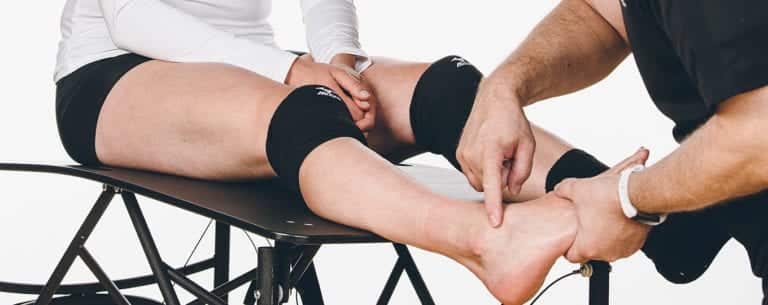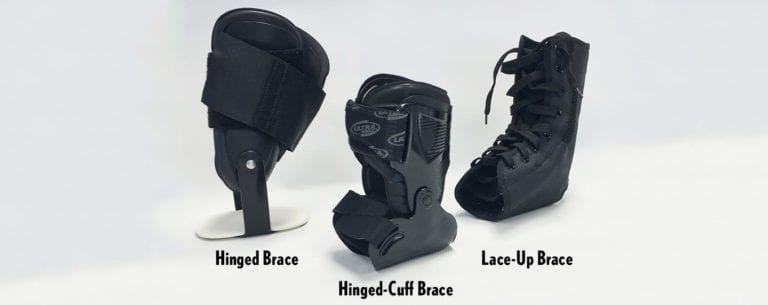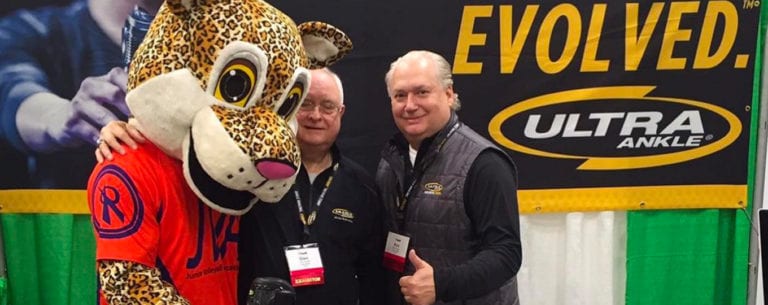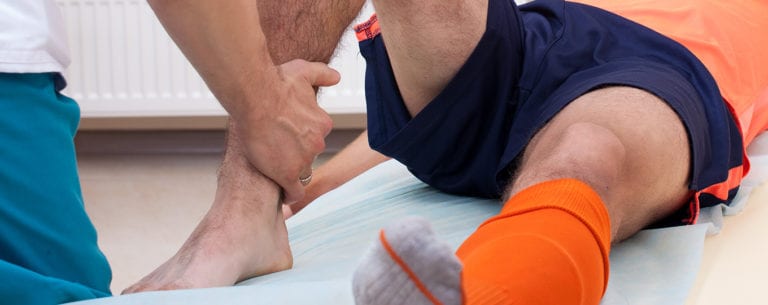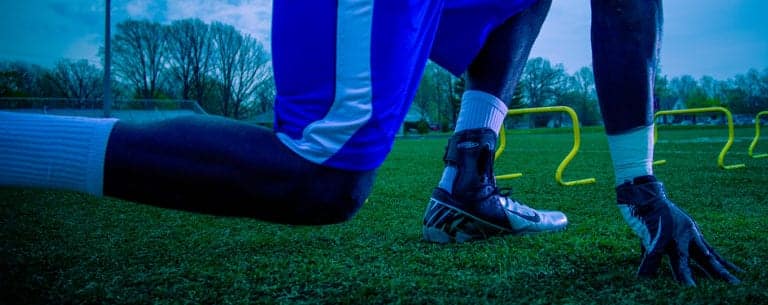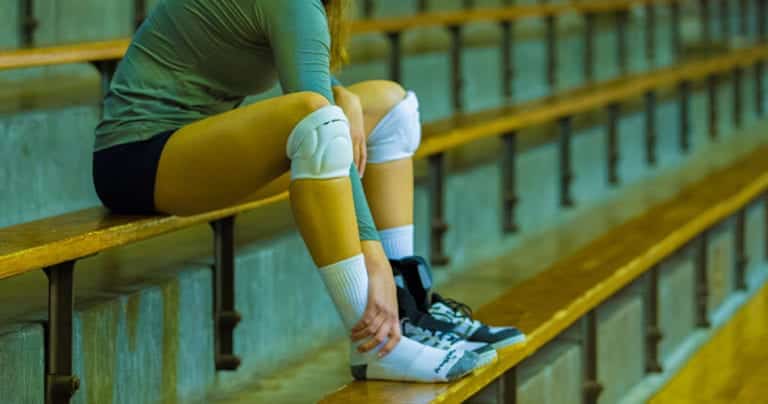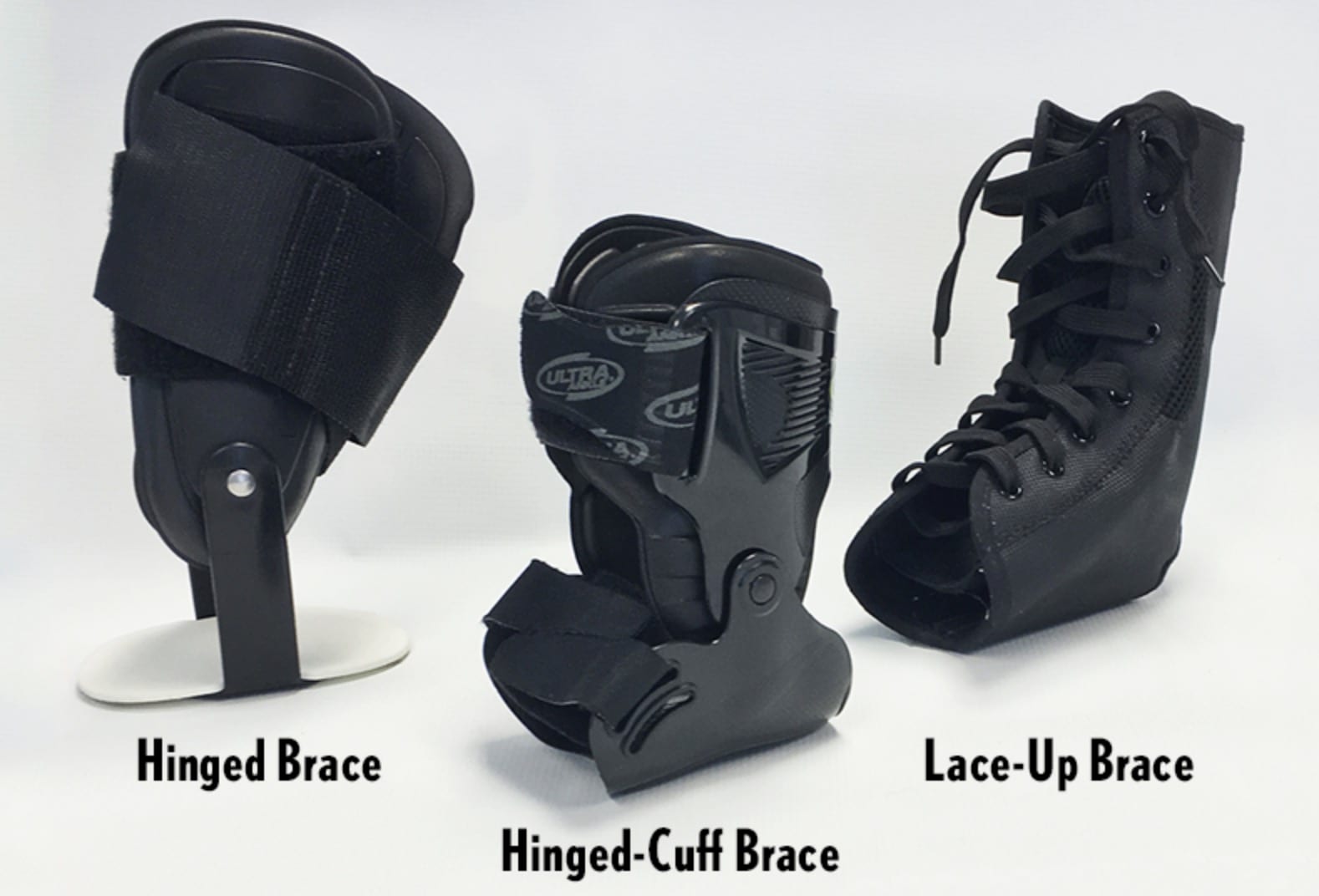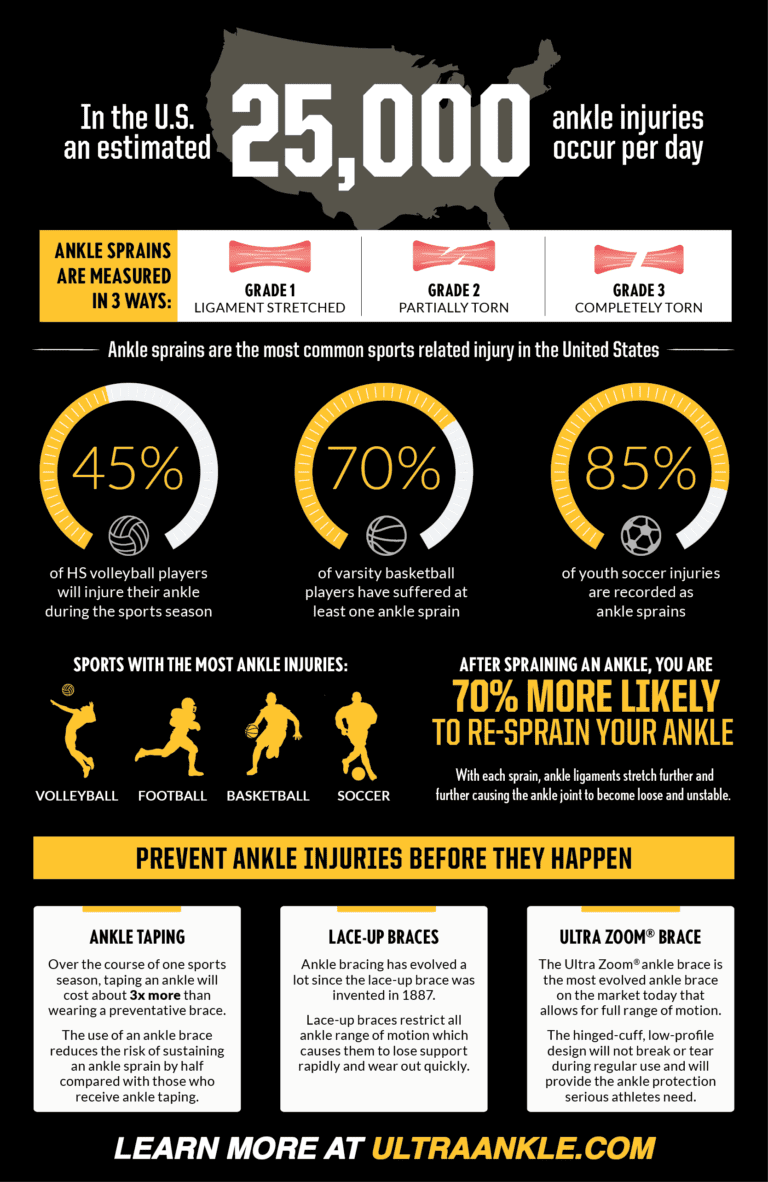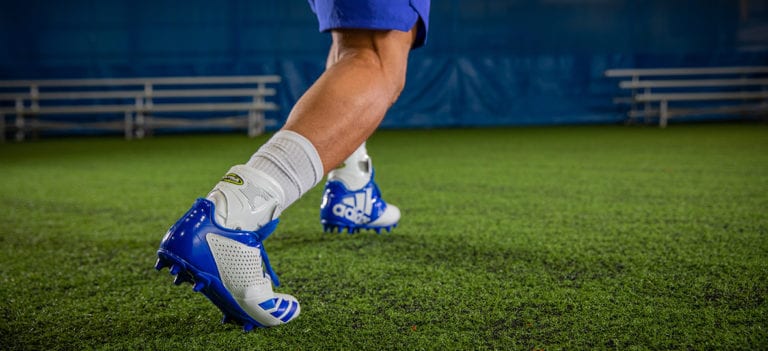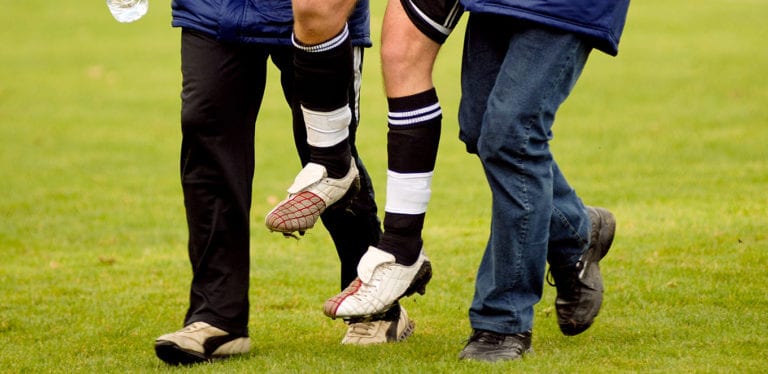
Unlike most other sports, where a player’s hands are important, choosing the right ankle brace for soccer is much more critical due to soccer players primarily utilizing their ankles and feet during play.
Imagine asking a basketball player to wear a rigid brace on his hand… that player would probably find it difficult to dribble and shoot because the brace takes away his touch on the ball and/or restricts his natural range of motion. The same goes for soccer players who rely on their ankle and foot to control the soccer ball, which is what makes choosing a soccer ankle brace difficult and frustrating.
When it comes to ankle guards, you don’t want too much restriction that would negatively impact your performance but if your ankle is unstable and isn’t braced properly you are highly susceptible to repeat ankle injuries. Fortunately, there are new types of ankle braces available that focus on support and performance – meaning soccer players are able to retain their full range of motion and ball touch while helping to prevent ankle sprains.
When sitting on the sidelines after numerous soccer ankle injuries isn’t an option anymore, it’s time to evaluate the different types of soccer ankle braces available.
Types of Soccer Ankle Braces
There are three main types of ankle braces available on the market today:
- Lace-up ankle supports – Fabric based lace-up design with wrap around straps.
- Rigid/Hard Plastic Braces – Semi-rigid hinge design with attachment straps.
- Soft Shell Ankle Braces – Flexible hinged-cuff design with attachment straps.
Lace-Up Ankle Braces
Lace-up ankle braces were first introduced in 1887 as a basic corset design that restricts all ankle range of motion. Lace-up braces of today will typically have straps that wrap around the ankle in a figure-8.
Since these braces can be laced up as tight as possible, they may give the wearer a false sense of support when they are first applied, however they lose support quickly as they resist the ankle’s natural range of motion. While lace-up ankle guards may feel comfortable because they are made from fabric, this fabric is also less durable and will easily rip and tear over time… not to mention absorb odors and start to smell pretty bad.
Research studies have shown that lace-up ankle braces can restrict performance by resisting the natural up and down range of motion of the ankle. This is one reason why we recommend athletes wear a hinged ankle brace for prevention purposes – this way the ankle does not weaken over time due to being held tightly in place. While all hinged ankle braces are not the same, they do provide the necessary range of motion to enhance ankle strength and performance unlike the lace-up type braces.
Overall, the lace-up ankle brace is designed for individuals on a budget needing mild ankle support that are not engaging in competitive and/or high intensity activity. Some of the better brands in this category are McDavid®, ShockDoctor®, Cramer® and ASO®.
Rigid Ankle Braces
Rigid, or semi-rigid ankle braces are made of hard plastic and typically have a hinge that allows full up and down ankle range of motion. The rigid hinged ankle brace was first introduced commercially in 1985. A pivoting hinge connecting the bottom foot section on both sides of the ankle to an upright section that was secured with a strap to the lower leg. The innovative hinge design offered the athlete free up and down ankle motion to run and jump without restriction. With the brace moving with the ankle, and not against it like with lace-ups, the brace stayed securely in place maintaining longer-lasting ankle support.
Historically soccer players have stayed away from these rigid ankle braces for three reasons:
- Since the brace is rigid or semi-rigid it can be bulky to wear and trying to fit the brace in a tight-fitting soccer cleat can be difficult.
- The more rigid the ankle brace is the more uncomfortable it can be to wear for extended periods of time.
- Soccer players say that rigid braces effect their touch on the ball as the ball can be deflected off the brace creating an uncontrolled dribble.
Hinged ankle braces are good for individuals looking for moderate ankle support to help protect or prevent the basic “low” ankle sprain or inversion (turning) ankle injury. Brands in this category are Active Ankle® and McDavid®.
Soft Shell Ankle Braces
The newest and most advanced type of ankle brace to hit the market utilizes a “soft shell” design (trademarked Performathane®) to work with a player’s body heat to create a flexible, custom fit. These custom fitting ankle braces are supportive enough to help prevent ankle injuries but are also flexible and low-profile enough to be worn in the standard tight-fitting soccer cleat for extended periods of time. Introduced in 2000, the purpose of the soft shell design is to provide support as close to the skin as possible. By creating a form-fitting ankle brace around the ankle joint you are able to control excessive joint motion much better than older types of braces.
Our soft shell ankle brace, the Ultra Zoom, also incorporates the next-generation hinged-cuff design. While hinged braces restrict excessive ankle turning, the hinged-cuff design restricts excessive ankle turning and twisting to help prevent both low and high ankle injuries. For that reason, the hinged-cuff design ankle brace offers a higher level of protection than either the lace-up or hinged only ankle brace design.
The soft shell ankle brace is best for athletes who want to help prevent ankle injuries or players with mild/moderate ankle instability. Typically lasting multiple sports season, these are also the most cost effective ankle bracing solution in the market due to their durability.
Soccer Cleats and Ankle Braces
Low-profile, flexible ankle braces fit in almost every traditional soccer cleat, however in recent years newer cleat designs utilizing a sock-like liner may be too tight to insert an ankle brace in. These select newer cleats, where the upper shoe is one complete piece, are difficult not only to fit ankle braces but other medical devices such as custom orthopedic inserts as well. If you’re a soccer player that needs to wear a preventative ankle brace, we recommend a low top soccer cleat with a traditional tongue and laces if possible. This type of soccer cleat creates a larger opening to insert the ankle with the brace applied.
If you have any more questions about soccer ankle braces, feel free to send our athletic trainers a message online or by commenting on this post below!
SHARE WITH FRIENDS
RECENT POSTS
POST BY TOPIC
- Acute Ankle Injuries (7)
- Ankle Bracing (33)
- Ankle Injuries (17)
- Ankle Injury Prevention (19)
- Ankle Instability (4)
- Athletic Trainers (2)
- Athletic Training (3)
- Basketball (6)
- Football (9)
- Hiking (2)
- injury (2)
- Mild/Moderate Ankle Injury (2)
- News (2)
- Osteoarthritis (5)
- Pickleball (3)
- Soccer (4)
- Sports (17)
- Tennis (3)
- Ultra 360 Lace-Up (2)
- Ultra CTS (6)
- Ultra Zoom (9)
- Uncategorized (2)
- Volleyball (8)
